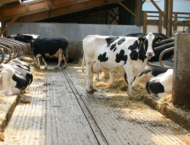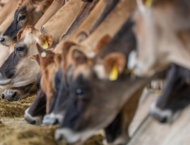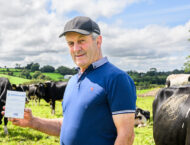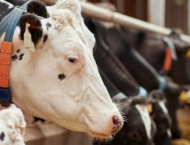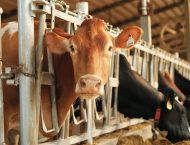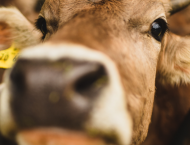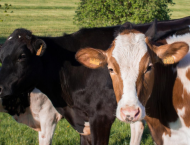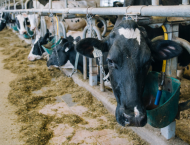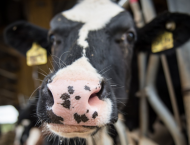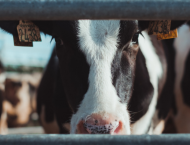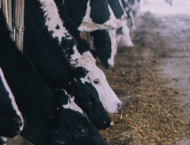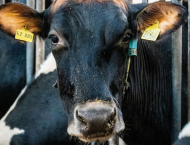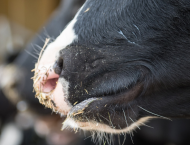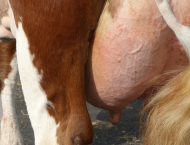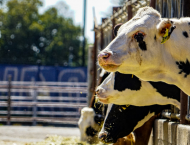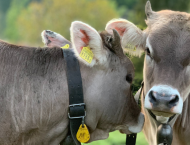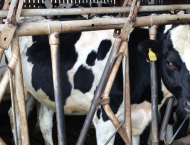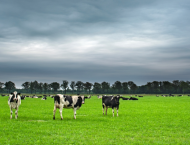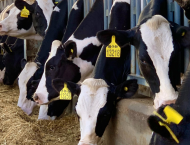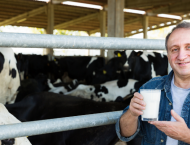Crises in the food sector, such as that triggered by BSE (Bovine Spongiform Encephalopathy), a disease detected for the first time in 1986 in the United Kingdom and for which a link with the use of meat and bone meal in cattle feed was suspected since 1988, or the so-called dioxin crisis that hit particularly the belgian poultry sector in the spring of 1999, put the European legislator in front of the need to define a new food safety system that would focus on the spirit of collaboration not only at a business level along the entire supply chain, but also between food businesses and official authorities, as well as between Member States. With the legislative choices that followed the White Paper on food safety published in 1999, the legislator’s objectives clearly aimed at improving quality standards and strengthening control systems across the European Union from farm to consumers. With the 1999 version of the White Paper, of which principles and objectives defined at the time no longer reflect the current situation of food safety, the European Commission proposed a set of measures that would allow food security to be organized in a more coordinated and integrated way by a number of important actions: the creation of the European Food Safety Authority (EFSA), the establishment of a system for food safety risk communication (the Rapid Alert System for Food and Feed, RASFF), the definition of a legal framework that would include all operators involved in the food chain, including farms (a “from farm to fork” approach, with different requirements depending on the type of business and the phases conducted), more harmonized control systems at national level and, last but not least, proposing the construction of a dialogue with consumers and other stakeholders. All these aspects brought the legislator to define a regulation which is the reference for the European food safety system [Reg. (EC) n. 178/2002], and in subsequent years it issued a series of regulations that are part of the “hygiene package“, a group of regulations aiming at harmonizing and simplifying all legislative aspects on food hygiene, with specifications for products of animal origin intended for human consumption. An important aspect of these regulations concerns the introduction of the term responsibility of the different food business operators along the food chain, who, precisely by virtue of the obligations and requirements set with the package, still operate under a self-control system today. The concept of self-control has a wide meaning and is strictly connected to the operator’s responsibility for food hygiene and safety, where keeping the production under control from a food safety point of view is mandatory for the food business operator. This specific system not only looks at the final product, but also takes into account the complexity of the supply chains and the phases that make up each production from the beginning to the end, in which the behavior assumed by all food business operators and their staff si crucial for a safe food product. Therefore, by obliging the operator to produce and do business by following rules that imply prevention measures first of all, the scope of the legislative decision was to bring producers to the complete awareness of food safety in the company under their control. However, this is a system that brought food businesses in front of new and complex burdens, despite the flexibility allowed by the hygiene package itself.
Over the years, thanks to the revaluation approach that has always been adopted to improve the regulatory framework, the Commission has presented 5 different legislative proposals that are part of the 2013 Animal and Plant Health Package, and which today finds a concrete perspective in new regulations, such as the Reg. (UE) n. 2017/625 on official controls and n. 2016/429 (Animal Health Law). The essential aspect of these regulations is that they look at food safety taking into account the new challenges that food business operators are facing, such as antimicrobial resistance, one of the major current issues for livestock farming and related sectors. Considerandum n. 32 of Reg. (EU) no. 2016/429 perfectly clarifies the intent of the Animal Health Law with respect to antimicrobial resistance, which is of increasing concern, and therefore considering it a “threat to human or animal health“: in considerandum n. 32 it is specified that microrganisms that have become resistant should be treated “as if they were transmissible diseases, and thus covered by the scope of this Regulation“.
Crises and challenges have not stopped, and the Covid-19 pandemic is just one example. The food industry will face many difficulties in the coming years, a period in which the agri-food sector will have to focus on environmental, economic and production sustainability: aiming at the achievement of certain sustainability objectives by 2030, the Commission recently approved the Farm to Fork strategy, which is an important element at the heart of the European Green Deal. The strategy will consider both legislative and non legislative initiatives. The agri-food sector will have to put effort into the reduction of the use of pesticides, antimicrobial substances and fertilizers, increase of organic farming, improvement of animal welfare and promotion of biodiversity to contribute to achieve climate neutrality by 2050 in the EU. Furthermore, there is also the need for a more equitable distribution of value in the agri-food supply chain. It is a strategy that does not only include food safety, but it extends its perspective to other fields closely linked to each other and capable of influencing each other.
Experience, such as that we have lived with the current pandemic, is progressively showing us how food production cannot be conceptually and pragmatically separated from the environment and both human and animal health. These are strictly interconnected fields, which require a balanced approach and operators that run their business with an increased awareness, working together to build robust interactions along the chain. The goal is to have sustainable production from an economic, environmental and food safety point of view. This is a matter of social responsibility.
Antimicrobial resistance (AMR, including the more specific antibiotic resistance) is one of the many hard challenges the dairy sector is facing. For many years, the use of antibiotics in dairy farms has helped farmers to tackle the damage related to infections. Resistance is a natural mechanism and resistance genes may be inherently present in microbial populations or acquired through horizontal gene transfer mechanisms. The expression of resistance may occur under normal conditions or can be triggered by exposure to environmental stress, chemicals or other biological agents. Drugs and antibiotics are an example of chemical stress factors. Prolonged or increased exposure to these factors leads to a selection of the strains that survive thanks to the resistance genes, creating the basis for their proliferation and subsequent propagation in the environment, up to humans, with frequenlty serious consequences. According to Cassini and colleagues (2019, Attributable deaths and disability-adjusted life-years caused by infections with antibiotic-resistant bacteria in the EU and the European Economic Area in 2015: a population-level modeling analysis, Elsevier), linked to the excessive and inappropriate use of antimicrobials in animal and human healthcare leads to an estimated 33,000 human deaths in the EU/EEA every year, and considerable and inevitable healthcare costs. As highlighted in the Farm to Fork strategy, the Commission will therefore take action to reduce overall EU sales of antimicrobials for farmed animals and in aquaculture by 50% by 2030. The new Regulations on veterinary medicinal products and medicated feed already provide for a wide range of measures to help achieve this objective and promote one health.
In a farm, to protect the animal health and to ensure safe milk with respect to its hygienic-sanitary characteristics, all those biosecurity measures that help prevent the introduction and limit the spread of new diseases and infections shall be adopted. These measures include prevention, prophylaxis, control and eradication actions. Antibiotics are clearly a tool to support these actions, but when their use occurs through an irrational, excessive and inconsistent with respect to the specific indications approach, the development of antibiotic resistance is a real risk. Prevention is therefore a fundamental element and tool for animal health and welfare, but also for a safe and technologically suitable milk: in fact certain antibiotic residues may lead to problems during fermentation, compromising in some cases the entire dairy transformation. Currently, very few new antibiotic substances are in the development pipeline: the risk associated to the lack of new and effective products, together with the increase of antimicrobial resistance, could bring society to conditions of a pre-antibiotic era when a simple infection could kill a child or when treating specific surgical operations could be impossible without powerful antibiotics for prophylaxis. As reported by WHO, if we do not act against antimicrobial resistance, it could cause 10 million deaths each year by 2050 and damage to the economy as catastrophic as the 2008-2009 global financial crisis. By 2030, antimicrobial resistance could force up to 24 million people into extreme poverty. While the problem of dealing with biosecurity issues still remains, on the other hand today pharmaceutical research is having difficulty finding new effective antibiotics. Alternative solutions are required, and they should be complementary to antibiotic products which should be used in a rational and effective way when actually needed.
The livestock sector is hugely involved in this situation, and for this reason it shall contribute to the process of reversing the current pattern of AMR: today, each operator may contribute to the reduction of antimicrobial resistance, allowing to avoid apocalyptic scenarios such as those we have experienced during the recent Covid-19 pandemic.
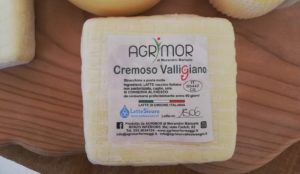
SafeMilk (or simply “LatteSicuro” in Italian), a protocol set up and promoted by OZOLEA, is part of this hard context for food safety of the dairy sector. SafeMilk started as a commercial experience, which is still possible thanks to the use of OZOLEA products, but it cannot be simplified in these terms: in fact SafeMilk is a whole and complete farm management experience. The key element for the success of the SafeMilk protocol is in the farmer’s ability to understand when to use OZOLEA products, how to use them and above all how to manage the dairy farm from beginning. Applying this protocol means for farmers to completely change the approach to dairy farming, and in this process they should not be left alone. It is not a matter of charging farmers with further legal requirements or costs, since the more farmers rely on OZOLEA’s innovation, combining it with effective management in the farm, the more they will benefit in terms of less milk waste and less antibiotics purchase: thus, advantages that globally will make milk safer and more sustainable. A virtuous mechanism for the whole supply chain, up to the consumer.
SafeMilk is a project based on four pillars:
- economic sustainability: in addition to milk waste linked to the problem of infections affecting the cow, or worst, the herd, there are many other intervention points that allow a reduction of waste;
- food safety: antibiotic resistance is a threat, and particularly in the livestock sector, given the close relationship between zoonosis and human health;
- environmental sustainability: reducing milk waste and the impact of residues in livestock waste means acting on environmental impact parameters;
- social responsibility: being aware of the problem of antibiotic resistance, the need for economic, social and environmental sustainability also means protecting the health of consumers and not betraying their trust. In particular, with SafeMilk the operators of the dairy industry are recognized for their ability to listen to the call of the world health organizations that ask to consciously reduce and use antibiotics as a form of fight against antibiotic resistance.
The peculiarity of SafeMilk is the involvement of all the operators contributing to dairy production and transformation for the construction of a model of circularity in which each operator can benefit and in which the commitment of farmers to sustainable livestock farming is rewarded.


